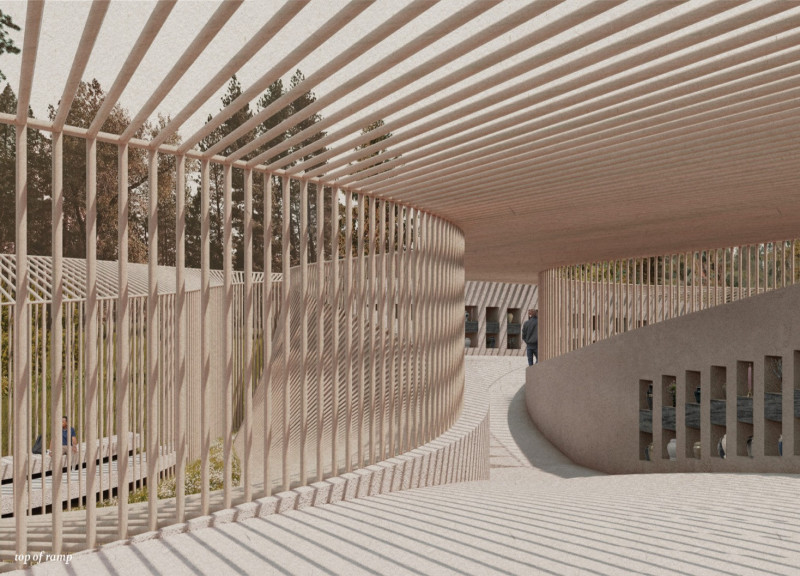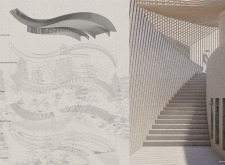5 key facts about this project
Wandering Walls is a columbarium located in Riga's Forest Cemetery, designed to serve as a space for personal reflection and remembrance. The project acknowledges that grief can differ greatly from person to person, and the design reflects this understanding. By creating various types of spaces, it encourages visitors to engage with their memories in a way that feels comfortable and meaningful. The architecture blends with the natural surroundings, fostering a peaceful atmosphere.
Spatial Organization
The design features three distinct chambers, each representing different levels of openness and enclosure. The first chamber sits above ground and comprises gently sloping ramps that lead upwards. These ramps are covered by a trellis canopy, which resembles a forest. The use of layered wooden members helps to connect the structure to its context, making the space feel harmonious with nature.
Subterranean Experience
The second chamber is found below ground and offers a more private experience. Despite being underground, it remains visually connected to the above through the trellis design. This descent into the earth provides an increased sense of security. The arrangement of niches encourages visitors to reflect intimately and personally. There is an abundance of light and air in this area, ensuring that it does not feel confining.
Enclosed Reflection
The third chamber is completely enclosed, designed for deep reflection and contemplation. This space is supported by a system of beams that includes clerestory openings. These openings allow light to filter in, creating a soft interplay of light and shadow. The atmosphere in this chamber enhances the reflective experience, inviting visitors to connect deeply with their memories.
Atmospheric Integration
Wandering Walls is notable for how it integrates with the landscape, focusing on continuity and connection rather than separation. The curved walls and different spatial experiences create a welcoming and respectful environment. The careful balance of open and enclosed spaces emphasizes the importance of personal memorialization. Every element of the design is aimed at honoring the complexity of grief, making it a thoughtful space for remembrance.






















































